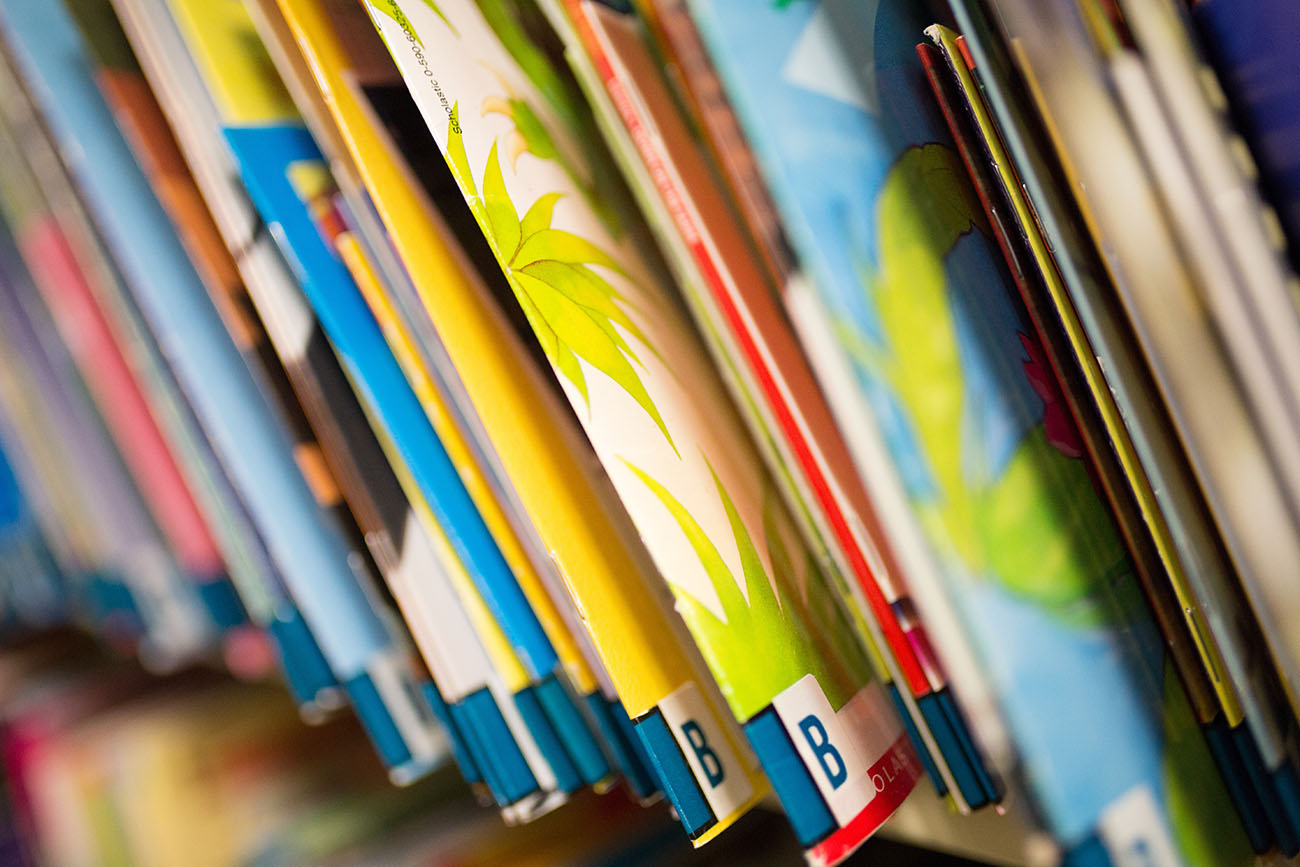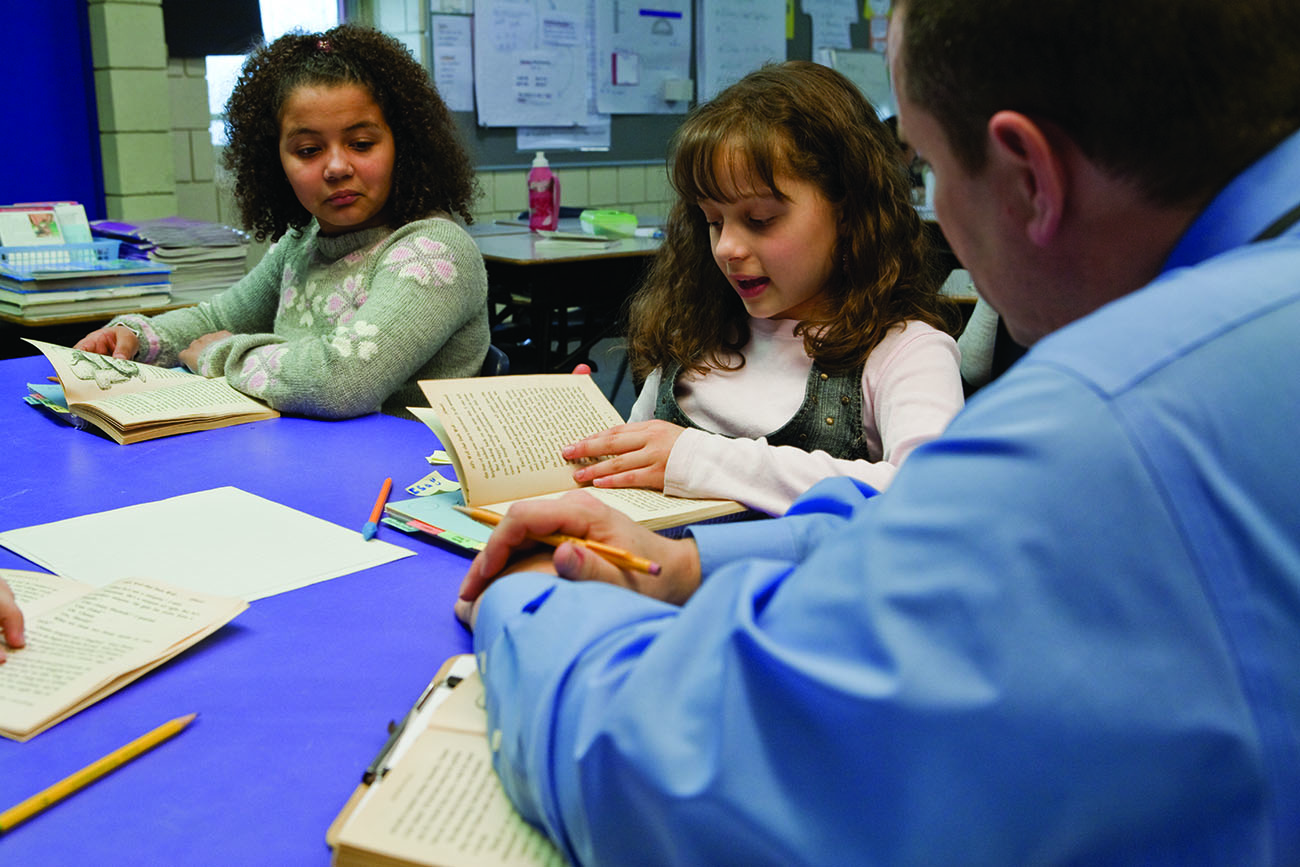
Lesley's Center for Reading Recovery & Literacy Collaborative faculty answer your questions about Guided Reading, a highly effective instructional approach used in classrooms worldwide.
Guided Reading is a research-based instructional approach in which a teacher works with a small group of students who are reading at similar levels at a particular point in time. The teacher supports each reader's development of effective reading competencies. However, unlike the reading groups of the past, the small, temporary groups are flexible and dynamic. Teachers regularly observe and assess their students, then group and regroup them based on the students' strengths and changing needs over the course of their reading development.
Guided Reading was developed in New Zealand in the 1960s. Later, when it came the United States, educators including Gay Su Pinnell and Lesley's own Irene Fountas enhanced it over time. In 1996, Fountas & Pinnell published their highly influential text, Guided Reading: Good First Teaching for All Children (Heinemann). This text revolutionized the teaching of reading, and is still used by over a million teachers worldwide.
The goal of Guided Reading lessons is to help students become more proficient readers. Teachers help their students learn how to read increasingly challenging texts over time, in a variety of genres and across a text level gradient (PDF). Texts on the gradient range from A to Z+, or, easiest to hardest. For example, a Level A book is suitable for the earliest readers, while a Level Z or Z+ is for highly proficient students.

Guided Reading varies slightly depending on the grade and the reading level of each group. However, there are essential components that support teachers in effective Guided Reading lessons.

While the teacher works with the small group of readers, the other students engage in independent literacy activities that don’t need direct teacher support. This block of time is referred to as "Readers' Workshop." They learn how to work independently on meaningful productive literacy work so as not to interrupt the Guided Reading group. Teachers need to establish these routines and have them running smoothly before beginning Guided Reading lessons.
Learn how to use Guided Reading in your classroom. We offer two, 5-day Guided Reading graduate courses on the Lesley campus each summer. The courses also offered online, or, in your school district for a group of 25–35 educators.
Fountas and Pinnell keep a list of their 80,000+ leveled books on their subscription-based website.
To use Guided Reading as an effective instructional approach, it's helpful to create a book room filled with multiple copies of the same leveled texts, for all teachers in the school to access. That way, each student has their own copy of the book to read during the Guided Reading lesson. The leveled texts in your book room should be of different genres, structures, forms, and reading levels.
To create a book room, collect books in a common area. Arrange the texts by level so teachers have assess to them. Include mostly short texts, both fiction and nonfiction, that students can read in one sitting. You may also include some longer texts. Finally, create a system for checking books in and out.
Alternatively, teachers may have a leveled book collection in their classrooms and share them across a grade level.
Guided Reading lessons for kindergarten, first-grade, and second-grade students generally focus on early literacy concepts, as well as word and language patterns. We recommend that teachers use The Fountas & Pinnell Literacy Continuum, Second Edition: A Tool for Assessment, Planning, and Teaching, PreK–8 (Heinemann, 2022) to assess students' understanding, guide teaching, and support students' reading progress.
For the first few months of kindergarten, children learn about how written language works. They participate in daily interactive read-aloud lessons, and shared reading so they can see the print and join in as the teacher reads. They also participate in interactive writing—where they share the pen with the teacher and write—to learn about how written language works. After a few months of school, teachers assess the students and form Guided Reading groups based on the data. The teachers get students started in reading little books and in engaging students in early lessons, usually in groups of 3 students at a time. Teachers select the texts for Guided Reading lessons using a gradient of difficulty that supports the readers’ strengths and moves them forward in their understanding of how reading works. In kindergarten, students are expected to move from Level A to Level D on the Fountas & Pinnell Text Level Gradient (PDF). Kindergarten students need opportunities to read and write every day. Ideally, teachers start with a reading block of 30 minutes a day and work up to 60 minutes. Teachers make decisions based on the readers in the group. They decide what goals are most important for the readers and what they'll teach in whole-group or individual contexts. Running Records, an assessment tool, help teachers document progress and next steps in learning. Teachers can then determine what needs more attention or decide to select a more challenging text. Since kindergarten students are learning about print and how it works in books, word work is a part of the Guided Reading lesson. The teacher provides opportunities for the students to work with letters, sounds, and words for 1–2 minutes at the end of the lesson.
Guided Reading instruction begins around early October. First-grade teachers use data from the students' kindergarten classroom and reassess the readers at the beginning of the school year. They form Guided Reading groups based on this data. The size of the Guided Reading groups is usually 4–6 readers. If teachers increase the group size, they must still be able to attend to each student's individual needs. Readers start from where they left off in kindergarten and move up the text level gradient in small group instruction. The expectation is that readers will move from Guided Reading Level C into Level J on the Fountas and Pinnell Text Level Gradient (PDF) by the end of the year. The texts and teaching increase in complexity as the readers move through the levels. Readers also move from “whisper reading” to silent reading. The texts the teachers use in Guided Reading lessons in grade one expand to include different genres and forms. The goal is to create well-rounded readers who have had experience with fiction and nonfiction texts, and can engage in the thinking necessary to understand texts deeply. The complexities readers face in texts as they expand their competencies require teachers to plan for and guide the teaching to support the readers’ thinking within, beyond, and about the text, in every text. Teachers continue to use assessment data and The Fountas & Pinnell Literacy Continuum, Expanded Edition: A Tool for Assessment, Planning, and Teaching, PreK–8 (Heinemann, 2016) to plan for, guide, and assess their teaching. Since each group will have different strengths and challenges, the teacher’s planning will be guided by the readers' competencies, not a predetermined set of skills or sequence. At the end of the Guided Reading lesson, the students spend 1–3 minutes on word work. They might focus on high frequency words or ways to break apart multi-syllable words. They'll also learn about word structures, such as plurals, possessives, contractions, and compounds. The other students work independently at centers in the classroom, or at their seats, so that the teacher can work with small Guided Reading groups. Typically, students complete 3–4 activities within the daily 60-minute literacy block.
Moving into second grade, students work independently for longer periods. Readers continue to build their stamina by engaging in independent reading and writing about reading during the literacy time. The room is quiet during independent reading. The tone of the room allows for readers to do their best thinking as they read and write about their reading. As readers increase their stamina for reading, they also work to expand their understandings of the complexities they'll meet in texts. They can solve a large number of words easily and have ways of solving new vocabulary. Their processing improves daily and they think and talk about texts in increasingly sophisticated ways. They read silently most of the time. In second grade, the texts increase in complexity and content. Across the school year, second graders typically move from Levels I/J to Levels M/N on the Fountas and Pinnell Text-Level Gradient (PDF). Short texts remain the staple of Guided Reading instruction, though the teacher may introduce a few chapter books to help students build reading stamina. The teacher uses fiction and nonfiction texts in Guided Reading lessons, as well as a range of forms in each genre. Many of the texts move away from familiar themes to include experiences with a variety of topics and ideas. Illustrations, though still included at these levels of text, play less of a role in supporting the meaning of the text. Teachers continue to use The Fountas & Pinnell Literacy Continuum, Expanded Edition: A Tool for Assessment, Planning, and Teaching, PreK–8 (Heinemann, 2016) to plan for, guide, and assess their teaching. Texts include more technical and content specific vocabulary, so teachers help their students problem solve to understand the full meaning. Each week, students write about their reading in a reader's notebook. Teachers can use this notebook as one way to assess students. Word work is still a part of the second-grade Guided Reading lessons as children learn how to take complex words apart.